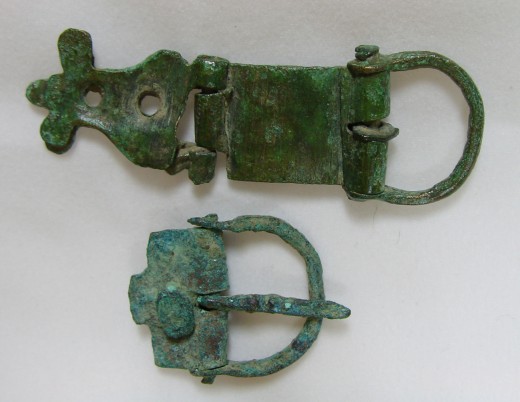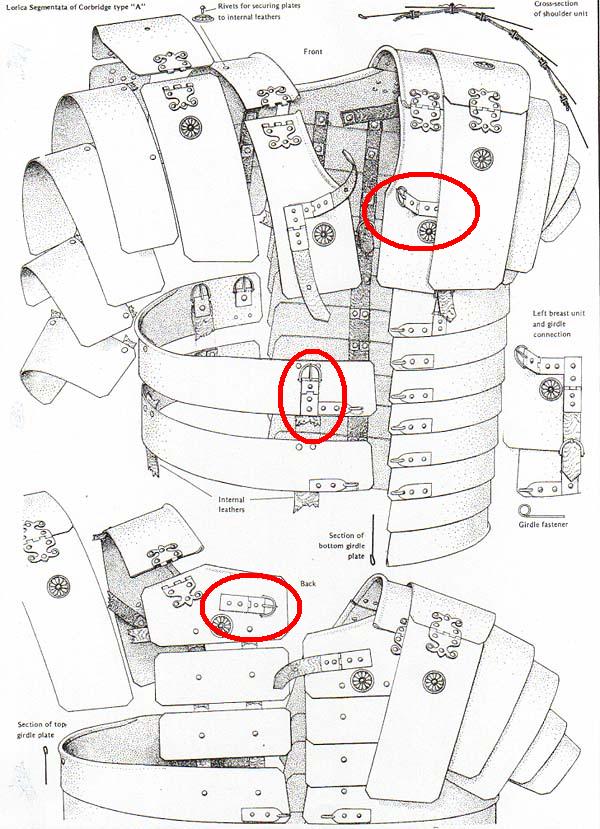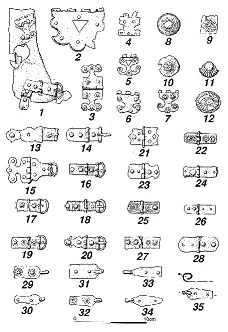







Roman Lorica
Segmentata chest buckle Corbridge style armor armour
|



 |
|
Date Acquired
|
2004 |
|
Location Discovered |
Balkans |
| Material
|
Bronze/ Copper Alloy |
|
Dimensions |
6.2cm long x 2.1cm wide |
|
Roman Empire |
1st to early 2nd
Century AD |
|
Description |
|
A working
bronze Lorica Segmentata strap buckle for the Corbridge style of
segmented plate armor along with a fragment of a front buckel. The standard armor for the Roman Legionary during
Rome's prime.
Nice patina
with a more elaborate floral design for the back half. Two holes remain
where the buckle would have been riveted to the armor.
The buckle
pin is missing and was clearly broken off in antiquity. This buckle design
was more uncommon and showed a greater interest in artistic nature than
the more simpler, yet more practical buckles seen later on.
This type
of armor had many advantages over scale mail and chain mail, primarily
being that it could withstand much harder impacts from pointed weapons
while still allowing a good amount of flexibility. The only inherent
weakness, at least on these earlier versions was that all the buckles and
hinges could easily break and required constant repair. Furthermore the
leather straps trapped in moisture on the iron, making it harder to keep
corrosion free. This early version was also relatively hard to put on and
invariably required a second person to do the buckles up. It was not until
the Newstead type that the buckles, hinges and laces were largely done away with.
(1)(2)(3)(4)
Click on Pictures for higher resolution

Close up view |
|
|

(1) Reference: Thomas, M.D.
(2003), "Lorica segmentata, A catalogue of finds", JRMES Monograph
No.2(Chirnside).
(2) References to
similar items: FEUGERE, Michel; Weapons of the Romans, page
103 2002.
(3) References to
similar items: CONNOLLY, Peter; The Legionary, page 24 2000.
(4) References to
similar items: CONNOLLY, Peter; Greece and Rome at War, page 229-230 1998.
*Image of Segmentata by
P.CONNOLLY
**Note on background. A
Fresco from the ancient Roman City of Pompeii. The interior walls of a wealthy
Roman's Estate 79AD. Picture taken July 2005.
